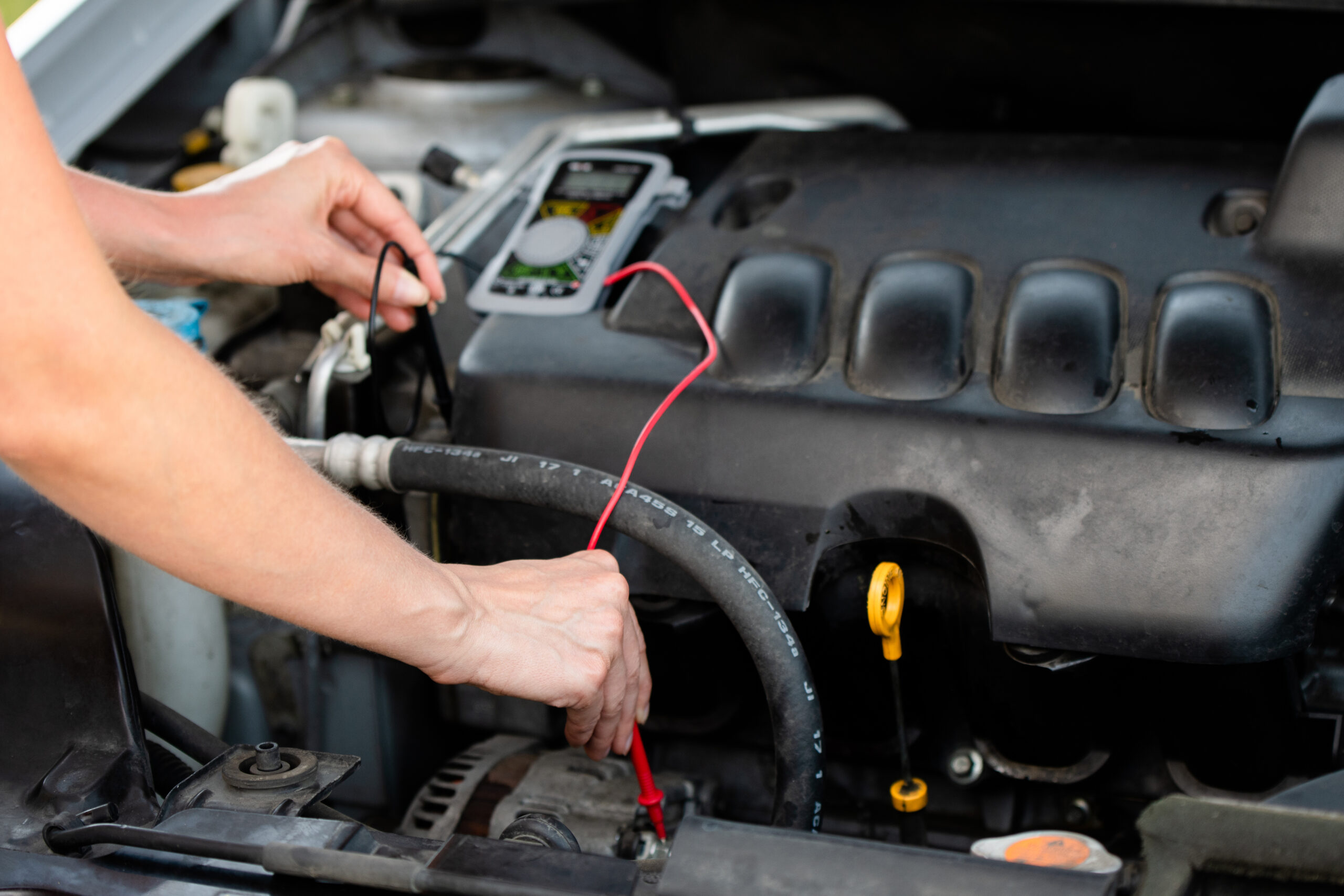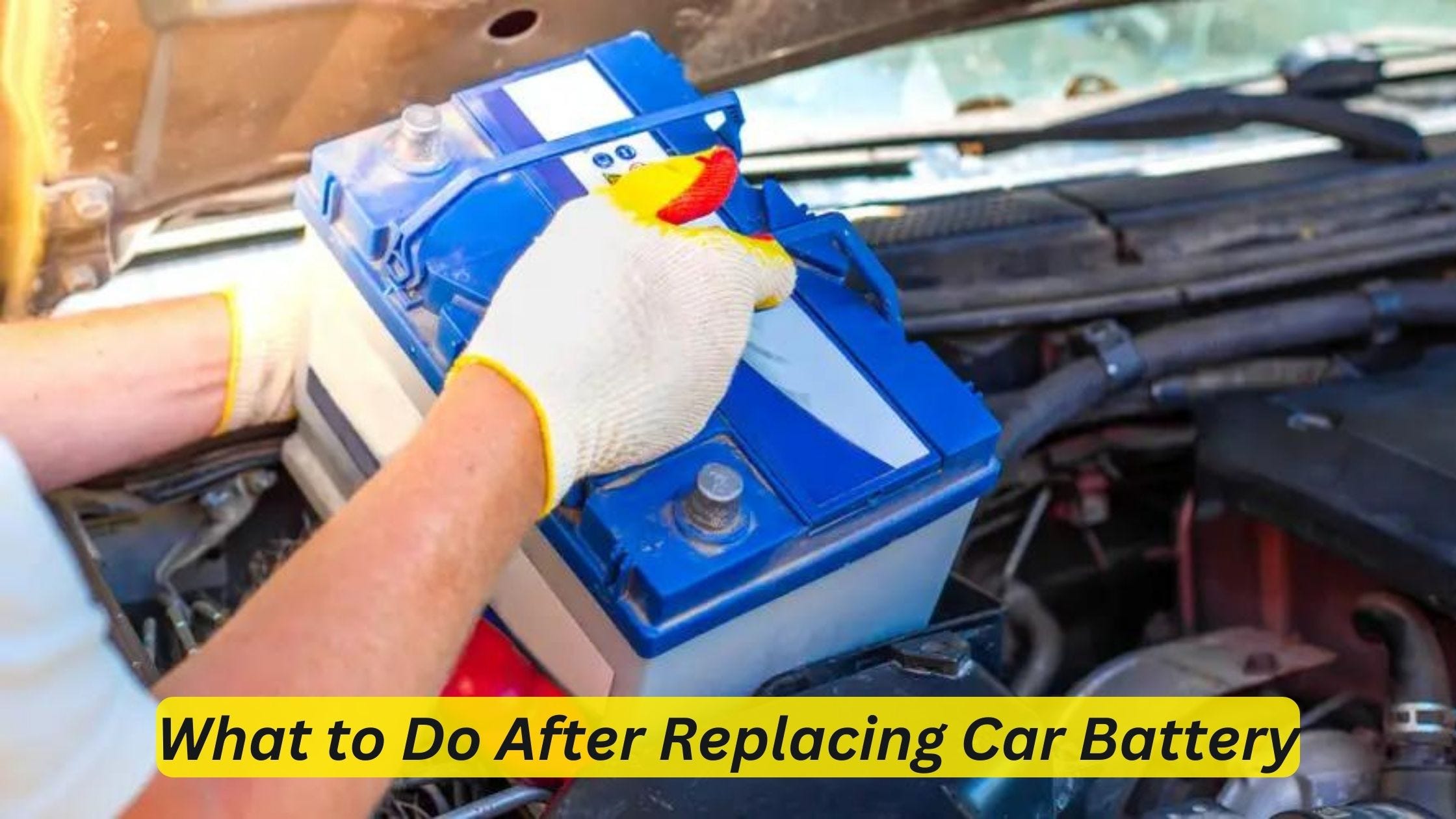What to Do After Replacing Car Battery. Start the engine to ensure the battery is functioning correctly. Check that the new battery is properly secured and connected.
A car battery is the heart of your vehicle’s electrical system, and replacing it marks the beginning of a fresh start for your car’s performance. Ensuring that everything is in perfect working order after installation is crucial. This process is not just about swapping an old battery for a new one; it’s about maintaining the longevity and efficiency of your vehicle.
A seamless transition is essential to avoid future electrical issues. With a new battery installed, you have the opportunity to check other related systems to guarantee your car runs smoothly. This simple yet significant task can save you from unexpected inconveniences and ensure that your car remains reliable on the road. Embrace the peace of mind that comes with a successful battery replacement by following these straightforward steps.
Introduction To Post-battery Replacement
Replacing a car battery marks a fresh start for your vehicle’s electrical system. Understanding the right steps to take afterward ensures longevity and performance. Let’s explore what to do once you’ve installed a new battery.
Initial Steps
Check connections and settings after installing a new battery. Ensure cables are tight and corrosion-free. Here’s a quick checklist:
- Inspect the battery terminals for secure fit.
- Confirm the battery is mounted properly.
- Reset electronic systems like clocks and radios.
- Perform a charging system test.
Why It Matters
Post-installation care extends battery life and prevents issues. A well-maintained battery ensures reliable starts and keeps electronics running smoothly.
| Action | Reason |
|---|---|
| Secure connections | Prevents power loss and sparks |
| System reset | Restores functionality to devices |

Credit: medium.com
Checking The Electrical System
Checking the Electrical System is crucial after replacing your car battery. This step ensures everything works perfectly. Let’s dive into how you can do this effectively.
Verifying Connections
First, make sure all connections to the battery are secure. Loose connections can cause issues. Use a wrench to tighten the battery terminals. Be sure not to over-tighten. Check for corrosion. If you see any, clean it with a wire brush.
Ensuring Alternator Health
The alternator charges the battery while your car runs. A healthy alternator is vital. To check the alternator:
- Start the car.
- Turn on the headlights.
- Rev the engine.
- Watch the lights. If they get brighter, the alternator may be weak.
Use a multimeter to check the alternator’s voltage. It should be between 13.5 and 14.5 volts.
| Condition | Light Brightness | What it Means |
|---|---|---|
| Engine Idle | Dim | Normal |
| Engine Revved | Brighter | Possible Weak Alternator |
In summary, secure connections and a healthy alternator are key after a battery replacement. Follow these steps for a smooth ride.
Resetting Vehicle Electronics
Resetting Vehicle Electronics is a vital step after replacing a car battery. This process helps your car’s system to function correctly with the new battery. Let’s dive into the specific steps to reset your vehicle’s electronics.
Radio And Clock Settings
After a battery replacement, your car’s radio and clock settings may reset. Here’s how to restore them:
- Turn on your car’s ignition to the accessory position.
- Use the radio’s power button to switch it on.
- For the clock, find the settings menu. Use the arrows or knobs to adjust the time.
- Press the ‘set’ or ‘ok’ button to save the changes.
Ecu And Other Modules
The Engine Control Unit (ECU) and other modules may need a reset. This step ensures optimal performance.
- Start the car to allow the ECU to relearn idle and other settings.
- Drive your vehicle for at least 10 miles. This action helps recalibrate sensors and modules.
- Pay attention to any dashboard lights. They might indicate the need for further action.
Remember, patience is key during this process. Allow your vehicle time to adjust to the new battery.
Inspecting For Corrosion
Replacing a car battery can give your vehicle a new lease on life. Inspecting for corrosion is a crucial step after installation. Corrosion can lead to poor connections and potential vehicle failure. Let’s ensure your car’s power source remains in top shape.
Cleaning Battery Terminals
Clean terminals ensure a strong connection. Follow these steps to clean effectively:
- Turn off the engine.
- Disconnect the battery cables, negative first.
- Use a battery cleaning solution or a mixture of baking soda and water.
- Apply with a toothbrush or terminal cleaning brush.
- Rinse with cool water and dry with a clean cloth.
Preventing Future Corrosion
Keep your battery terminals corrosion-free. Use these tips:
- Apply anti-corrosion gel on the terminals.
- Install anti-corrosion washers.
- Check the battery regularly for early signs of corrosion.
- Ensure the connections are tight.
By following these steps, you can extend the life of your new battery and maintain your car’s reliability.
Testing The New Battery
Testing the New Battery is crucial after installation. It ensures your car runs smoothly. Perform a few simple tests to check the new battery’s health.
Voltage Check
A voltage check is a quick way to assess battery condition. Use a multimeter for this test. A healthy battery should read around 12.6 volts.
- Turn off the car.
- Set the multimeter to voltage.
- Connect the red lead to the positive terminal.
- Connect the black lead to the negative terminal.
- Read the multimeter display.
Load Test
The load test measures battery performance under stress. A professional tool is required. A passing battery maintains 9.6 volts for 15 seconds at half its CCA rating.
- Connect the load tester to the battery.
- Follow the tester’s instructions.
- Observe the voltage reading.

Credit: www.autozone.com
Driving Patterns Post Replacement
Changing your car battery is a fresh start for your vehicle. It’s crucial to adopt the right driving patterns after this change to ensure the new battery lasts long and performs well. Let’s explore how to adjust your driving habits post battery replacement.
Initial Drive
Right after installing a new battery, the initial drive is important. Your car’s computer system resets and needs to relearn your driving style. Here are key points for your first drive:
- Start the engine and let it idle for at least 5 minutes.
- Take a 30-minute drive on the highway if possible.
- Avoid short trips that don’t allow the battery to charge fully.
Long-term Habits
To keep your battery healthy, adopt these long-term habits:
| Driving Habit | Benefit |
|---|---|
| Regular Use | Prevents battery drain |
| Longer Drives | Ensures full charge |
| Periodic Checks | Maintains battery health |
Remember to drive your car regularly and for sufficient time to keep the battery charged. Check the battery connections often to ensure they are tight and corrosion-free. Embrace these habits for a longer battery lifespan.
What to Do After Replacing Car Battery: 7 Essential Steps
What should you do after installing a new battery? Here are the essential steps to follow to maximize the life of your new car battery and ensure your car operates at its best.
1. Check the Battery Connection
After installing a new battery, make sure the battery terminals are tightly connected. Loose connections can cause electrical problems and prevent your car from starting. Ensure the terminals are free of corrosion and dirt, which can interfere with the connection. If necessary, clean them with a mixture of baking soda.
2. Reset Your Car’s Electronics
Modern vehicles often have sophisticated electronic systems that may need resetting after a battery replacement. Here’s how:
- Clock and Radio: Most car radios and clocks reset when the battery is disconnected. Set the clock to the correct time and reprogram your radio stations.
- Power Windows and Sunroof: Some cars require you to recalibrate the power windows and sunroof.
- Security System: If your car has a security system, you might need to reset it or re-enter a code.
3. Drive Your Car
After replacing the battery, take your car for a drive. This helps the alternator recharge the new battery and ensures all systems are functioning properly. A 20-30 minute drive should be sufficient to recharge the battery and reset the engine control unit (ECU).
4. Monitor the Battery Light
Keep an eye on the dashboard battery light. If it remains on or turns on while driving, it could indicate an issue with the charging system. This might mean a problem with the alternator, battery connections, or other electrical components. Have a professional mechanic check it out if the light stays on.
5. Test the Battery
Use a multimeter to check the voltage of your new battery. A battery should read around 12.6 volts when the car is off. With the engine running, the voltage should be between 13.7 and 14.7 volts. If the readings are outside these ranges, there might be an issue with the battery or the car’s charging system.
6. Inspect for Leaks
After installation, inspect the battery for any signs of leakage. Battery acid leaks can damage your car and pose a safety hazard. If you notice any leaks, clean the area with a baking soda solution and water, and consider replacing the battery if the leak persists.
7. Maintain the Battery
To ensure the longevity of your new car battery, perform regular maintenance:
- Keep It Clean: Dirt and corrosion on the battery terminals can affect performance. Clean them periodically with a wire brush.
- Check the Charge: Regularly check the battery’s charge, especially before long trips or in extreme weather conditions.
- Secure the Battery: Make sure the battery is securely fastened in its tray to prevent it from moving and causing damage.
Replacing a car battery is just the first step in maintaining your vehicle’s electrical system. you can ensure your new battery performs optimally and has a long life. Regular maintenance and monitoring will help prevent future issues and keep your car running smoothly.
Maintenance And Monitoring
After replacing your car battery, proper maintenance and monitoring are key. This ensures your car runs smoothly. Let’s dive into how to keep your new battery in top shape.
Regular Checks
Keeping an eye on your car battery is crucial. Here’s what to do:
- Check the battery terminals monthly. Make sure they are clean and tight.
- Look at the battery case. It should not have cracks or bulges.
- Use a multimeter to check the voltage regularly. A healthy battery should read around 12.6 volts when the car is off.
Signs Of Potential Issues
Stay alert for these signs. They mean your battery may need attention:
| Sign | What It Means |
|---|---|
| Slow engine crank | The battery might be weak. |
| Dashboard warning light | This light can indicate battery problems. |
| Swollen battery case | It’s a sign of overcharging or heat damage. |
Remember, a healthy battery means a reliable car. Regular checks and knowing the signs of trouble help keep your vehicle running smoothly.

Credit: www.tiresplus.com
Frequently Asked Questions
Do I Need To Do Anything After Installing A New Battery?
Yes, after installing a new battery, check the connections, ensure it’s secure, start the vehicle to test it, and dispose of the old battery properly. Regularly monitor your battery’s performance thereafter.
Should I Let My Car Run After Installing A New Battery?
No, it’s not necessary to let your car run after installing a new battery; simply start the vehicle to ensure the installation is successful.
How Long Do You Have To Wait To Drive After Replacing A Car Battery?
You can drive immediately after replacing a car battery. No waiting time is necessary. Ensure the new battery is properly connected and secured before starting your vehicle.
Do You Have To Reset Anything After Changing A Car Battery?
After changing a car battery, you may need to reset your vehicle’s electronics, such as the radio presets, clock, and security system.
Conclusion
Replacing your car battery is just the beginning. Ensure it’s properly installed and your vehicle’s electrical system is functioning optimally. Regular checks and maintenance can extend battery life. Remember, a healthy car battery means a reliable ride. Keep cruising smoothly by staying proactive with your vehicle’s power source.
